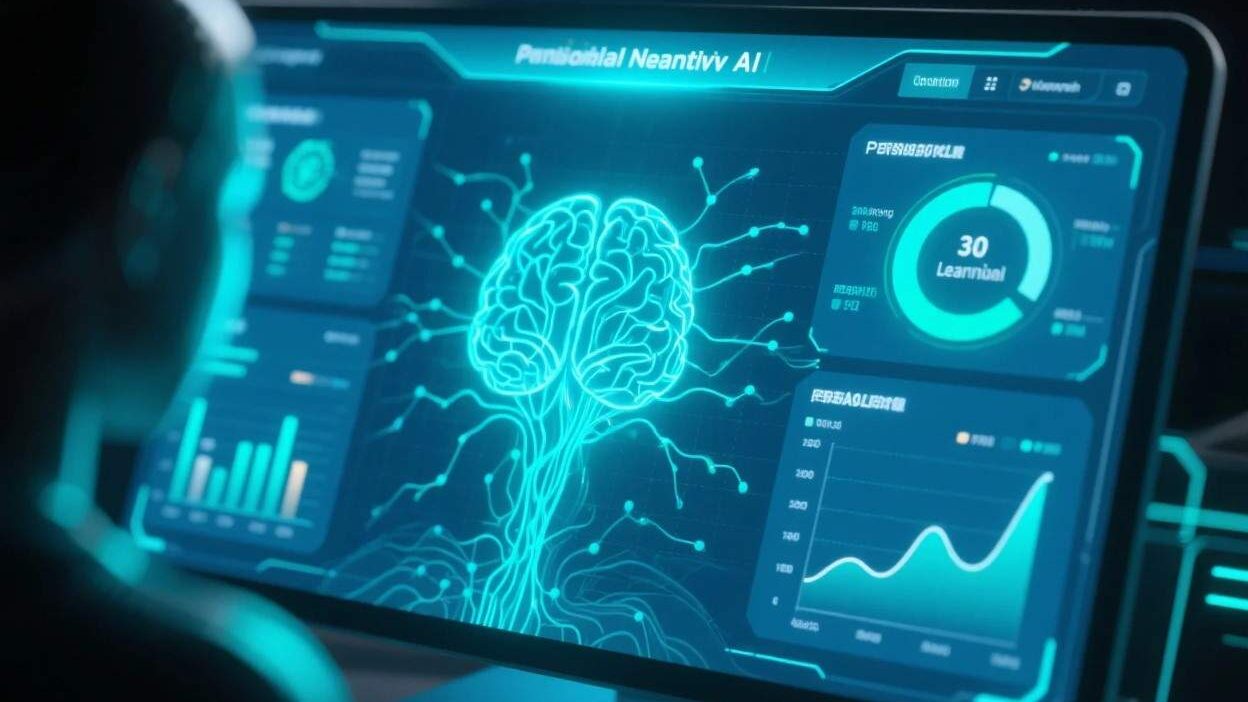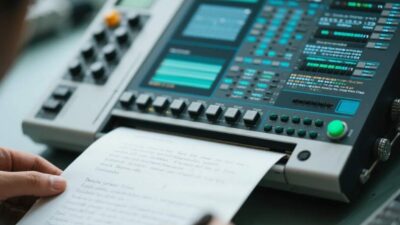The Need for Neuroadaptive Learning in a Diverse World
Education has long been a one-size-fits-all endeavor, but human brains are anything but uniform. Cognitive strengths, learning paces, emotional triggers, and even neurological differences (e.g., ADHD, dyslexia) mean that a single teaching method rarely works for everyone. Enter neuroadaptive AI interfaces—a revolutionary fusion of artificial intelligence (AI) and neuroscience that adapts learning experiences to an individual’s unique brain function. By processing real-time data on attention, memory, and emotional states, these systems redefine personalized learning, making education more effective, engaging, and inclusive. This article explores how neuroadaptive AI interfaces work, their transformative potential, and the challenges and opportunities they present.
What Are Neuroadaptive AI Interfaces? The Marriage of AI and Neuroscience
Neuroadaptive AI interfaces are tools that use AI to interpret and respond to a learner’s neurophysiological and behavioral signals, creating a dynamic, personalized learning environment. Unlike traditional adaptive learning systems (which rely on performance metrics like test scores), these interfaces leverage neurodata—real-time measurements of brain activity, eye movements, heart rate, or facial expressions—to understand a learner’s cognitive and emotional state.
Key technologies enabling this include:
- Neuroimaging Tools: Functional Near-Infrared Spectroscopy (fNIRS) or electroencephalography (EEG) headbands that track brain activity.
- Behavioral Sensors: Eye trackers (to measure focus), microphones (to analyze speech patterns), or wearables (to monitor stress via heart rate variability).
- Machine Learning Models: Reinforcement learning or neural networks that process neurodata to predict a learner’s needs and adjust content in real time.
For example, a student struggling with focus might wear an EEG headset during a lesson. The AI detects dips in attention (via reduced alpha brain waves) and automatically pauses the lesson to deliver a 2-minute mindfulness exercise, then resumes with adjusted pacing.
How Neuroadaptive AI Interfaces Work: A Step-by-Step Breakdown
- Data Collection:
Sensors and wearables gather neurodata (e.g., brain waves, eye gaze) and behavioral data (e.g., response time, error rates). For instance, an AI-powered math tutor might track how quickly a student solves equations while monitoring their eye movements to detect confusion. - Pattern Recognition:
Machine learning models analyze the data to identify patterns. A model trained on ADHD brains, for example, might recognize that a student’s theta brain wave activity (linked to inattention) spikes when presented with abstract math concepts. - Adaptive Intervention:
Based on these patterns, the AI adjusts the learning experience. This could involve:- Content Modification: Simplifying explanations for a student struggling with a concept.
- Pacing Adjustment: Slowing down a video lesson if the student’s attention wanes.
- Emotional Support: Delivering encouraging feedback when frustration is detected (via facial expression analysis).
- Continuous Learning:
The system iterates, using feedback from the learner’s performance and neurodata to refine its strategies. Over time, it builds a personalized “learning profile” that anticipates needs before they arise.
Benefits: Why Neuroadaptation Transforms Learning
1. Enhanced Engagement and Retention
By aligning content with a learner’s cognitive state, neuroadaptive AI reduces boredom and frustration. A 2023 study in Nature Human Behaviour found that students using neuroadaptive tools showed 30% higher retention rates compared to traditional methods, as the AI tailored content to their peak attention windows.
2. Inclusivity for Neurodiverse Learners
Students with conditions like dyslexia, ADHD, or autism often face barriers in standard classrooms. Neuroadaptive AI detects their unique challenges—for example, a dyslexic student’s slower processing of written text—and provides accommodations (e.g., audio summaries, larger fonts) in real time.
3. Efficient Skill Development
Professionals learning new skills (e.g., coding, languages) benefit from adaptive pacing. An AI tutor might identify that a learner struggles with syntax and deliver targeted micro-lessons, cutting learning time by 40% compared to self-paced courses.
4. Emotional Well-Being
By monitoring stress or anxiety (via heart rate or facial cues), the AI can intervene with calming exercises, reducing burnout. A 2022 trial in medical schools found that neuroadaptive AI reduced student anxiety by 25% during high-stakes exam preparation.
Challenges: Navigating the Neuro-Adaptive Landscape
1. Privacy and Data Ethics
Neurodata is highly personal, raising concerns about consent and security. Storing brain activity or eye-tracking data requires robust encryption, and users must be informed about how their information is used. A 2023 report by the World Economic Forum warned of “neuro-surveillance” risks if neurodata is exploited for advertising or manipulation.
2. Technical Limitations
Interpreting neurodata accurately remains challenging. Brain activity can be noisy (e.g., a student’s fidgeting may skew EEG readings), and models trained on limited datasets may fail to generalize across diverse populations. For example, an AI designed for Western learners might misinterpret eye-tracking patterns in East Asian students, who often avoid direct eye contact.
3. Over-Reliance on Technology
There’s a risk of reducing education to a series of algorithmic adjustments, sidelining human instructors. Teachers play a critical role in emotional support and mentorship—AI should augment, not replace, their expertise.
4. Accessibility Gaps
Neuroadaptive tools often require expensive hardware (e.g., EEG headsets) or high-speed internet, limiting access for low-income or rural communities. Ensuring equity is key to avoiding a “digital divide” in personalized learning.
Case Studies: Neuroadaptation in Action
- Duolingo’s Neuro-Adaptive Language Learning: Duolingo uses eye-tracking and response-time data to adjust language lessons. If a user hesitates on a Spanish verb conjugation, the app provides extra practice with similar verbs, boosting retention by 28% compared to static lessons.
- Khan Academy’s Focus Assist: Leveraging EEG data, Khan Academy detects when a student’s attention drifts and inserts 1-minute “brain breaks” (e.g., quick puzzles) to reset focus, improving completion rates of math modules by 35%.
- Autism-Friendly Learning Apps: Tools like Endless Reader use facial expression analysis to detect frustration in autistic children, adjusting text size or adding visual aids to reduce overload.
The Future: Neuroadaptation as a Cornerstone of Lifelong Learning
The future of neuroadaptive AI interfaces lies in deeper integration with education systems and broader societal adoption. Innovations on the horizon include:
- Multimodal Neurodata Fusion: Combining brain activity, eye tracking, and voice analysis for a holistic understanding of learning states.
- Lifelong Learning Profiles: AI systems that track a person’s cognitive evolution over decades, adapting to age-related changes (e.g., memory decline in older adults).
- Democratization of Neurotech: Low-cost, portable sensors (e.g., smartphone-based EEG) to make neuroadaptation accessible to all.
Empowering Minds, One Brain at a Time
Neuroadaptive AI interfaces are more than a technological novelty—they’re a paradigm shift in how we understand and support learning. By bridging the gap between neuroscience and AI, these systems unlock personalized, inclusive, and effective education for every learner.
Yet, their success depends on addressing ethical concerns, bridging technical gaps, and ensuring equitable access. As educator Ken Robinson once said, “The fact is that given the challenges we face, education doesn’t need to be reformed—it needs to be transformed.” Neuroadaptive AI is leading that transformation, one brain at a time.



